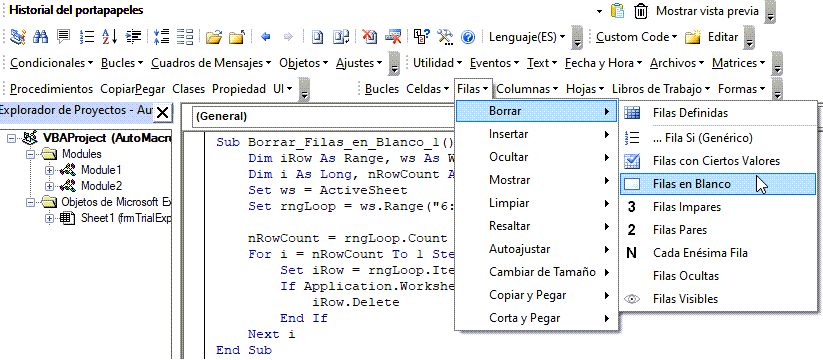VBA – Funciones UBound y LBound
In this Article
Descripción Función UBound
Devuelve el subíndice más alto de una dimensión de un array.
Ejemplos Sencillos de UBound
Sub UBound_Example()
Dim a(3 To 10) As Integer
MsgBox UBound(a)
End SubResultado: 10
Sintaxis UBound
UBound(NombreArray, [ Dimensión ])La función UBound contiene 2 argumentos:
ArrayName: Nombre de la variable Array.
Dimensión: [Opcional] Número entero que indica el límite superior de la dimensión que se devuelve. Utilice 1 para la primera dimensión, 2 para la segunda, etc. 1 si se omite.
Ejemplos de la Función UBound de Excel VBA
Sub UBound_Example1()
Dim arrValue(1 To 5, 4 To 8, 12 To 25)
MsgBox UBound(arrValue)
MsgBox UBound(arrValue, 1)
MsgBox UBound(arrValue, 2)
MsgBox UBound(arrValue, 3)
End SubResultado: 5, 5, 8, 25
Descripción Función LBound
Devuelve el subíndice más bajo para una dimensión de un array.
Ejemplos Sencillos de LBound
Sub LBound_Example()
Dim a(3 To 10) As Integer
MsgBox LBound(a)
End SubResultado: 3
Sintaxis de LBound
LBound(NombreArray, [ Dimensión ])La función LBound contiene 2 argumentos:
ArrayName: Nombre de la variable Array.
Dimensión: [Opcional] Número entero que indica el límite inferior de la dimensión que se devuelve. Utilice 1 para la primera dimensión, 2 para la segunda, etc. 1 si se omite.
Ejemplos de la Función LBound de Excel VBA
Sub LBound_Example1()
Dim arrValue(1 To 5, 4 To 8, 12 To 25)
MsgBox LBound(arrValue)
MsgBox LBound(arrValue, 1)
MsgBox LBound(arrValue, 2)
MsgBox LBound(arrValue, 3)
End SubResultado: 1, 1, 4, 12



